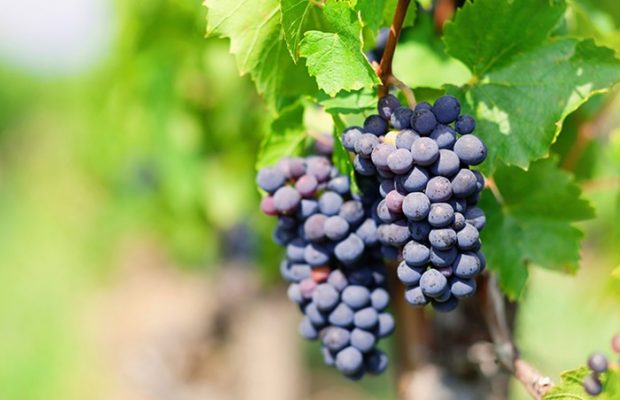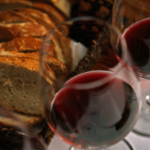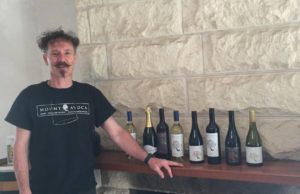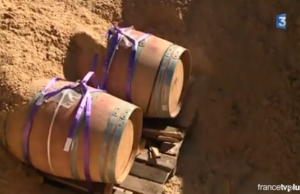Gamay: The Comeback Kid

THE GAMAY REPUTATION was trashed in the ’70s and ’80s when producers in Beaujolais, the grape’s spiritual home in eastern France, marketed it as “Beaujolais Nouveau.” This brash, infant wine barely had time to ferment, let alone develop any charm, before it was on trucks headed for metropolitan centers around Europe. A tradition of considered, quality winemaking had been abandoned for easy money and the gleam of media attention. Pity that much of the stuff tasted like thin, tart Kool-Aid.
However, like a vinous Robert Downey Jr. doing a spell of rehab before kick-starting his career, Gamay made a comeback: It’s been rediscovered as a serious wine in Beaujolais, and is increasingly venerated overseas in New Zealand, Australia, Canada, and the US. Apparently, there are second acts in the lives of grape varietals.
The Beaujolais Nouveau heyday, meanwhile, is glossed over as an aberration, an embarrassment of zealousness and greed, fools running with the fast crowd. According to revered wine writer Jancis Robinson, “Today only unsophisticated wine markets… seem at all interested in Beaujolais Nouveau.”
That includes Portland, then—the Annual Beaujolais Nouveau Festival, held at the Heathman Hotel, is celebrating its 15th year, while the SE Wine Collective is hosting a tasting of “Oregon Nouveau,” which includes fresh pressings of Gamay and other varietals from Division, Holden, Fausse Piste, St. Reginald Parish, and others. Kate Norris of Division Wine, while acknowledging that Nouveau is easily abused, is happy to defend its virtues: “It’s not a complicated wine, nor one for connoisseurs. It’s fun to make—it’s a party wine.” (As much as I admire Jancis, I know whose side I’m on here.)
So what will Gamay give you? It resembles Pinot Noir (in fact, it’s the bastard offshoot of Pinot), but it’s lighter, characterized by high acid and tart berry fruit. It’s more vibrant, too, with a thirst-quenching urgency—if Pinot is stately and for mulling over, Gamay is a fleet-footed flyweight, all supple and fresh. It plays nicely with food, everything from Thanksgiving feasts to fish dishes.
Or that’s what the textbooks will tell you. In reality, Gamay won’t be so easily penned in—these days Beaujolais winemakers, realizing their grandparents were on to something with their traditional techniques, make darker wines with heavier tannins that actually require aging before drinking. (Aged Gamay is one of the wine world’s secret delights, though getting hold of the stuff isn’t always easy.) The Beaujolais’ 10 cru—defined districts where the best fruit is grown—can produce remarkably different wines, from a floral and fruity Fleurie to a meaty Morgon.
New World examples can be different again. Take Divisions Wines’ Gamay Noir “Cru,” 2015—it has a good weight, and balances minerality with fruitiness—and compare with Evening Land’s Seven Springs Estate, 2014, a much lighter wine that has classic floral aromatics but confounds expectation with an energetic amalgam of red fruit and a citrus freshness.
Perhaps Gamay’s problem now is that, although its reputation is on the rise, it doesn’t have a singular identity. But its expanded repertoire is no bad thing for anyone seeking good-value wine—so give the Pinot a rest and dive into Gamay’s harlequin world.
Beaujolais
Cru Beaujolais often doesn’t have the word “Beaujolais” on the label (the French presume you know your cru villages—bless ’em), so you might need to ask for pointers at your wine store. Prices are still relatively cheap, and good value compared to Pinot. Try Lucien Lardy, “Les Roches,” Fleurie 2014 ($15.50, from Europa, europawinemerchant.com), a nicely priced, surprisingly muscular Fleurie with juicy red fruit and fresh acid—it’s one for the Thanksgiving table. Pascal Aufranc, “Vignes de 1939,” Chénas, 2014 ($16, from 1856, 1465 NE Prescott), is a great wine for fall—raspberry and cherry flavors with a touch of white pepper, rounded out by firm tannins.
Oregon
Though Gamay represents a tiny fraction of Oregon’s output, winemakers are increasingly being lured by its charms and the fact that the Willamette Valley has much in common with Beaujolais. Urban winemakers Bow and Arrow do a Loire-style Gamay, ($21, Division Wines, 3564 SE Division) that is bright and fruity, but grounded by an earthiness. Biodynamically produced by Gamay pioneers Brick House, their 2014 ($29, brickhousewines.com) is wonderfully complex and yet fresh on the palate.
Click here to view original web page at www.portlandmercury.com



















